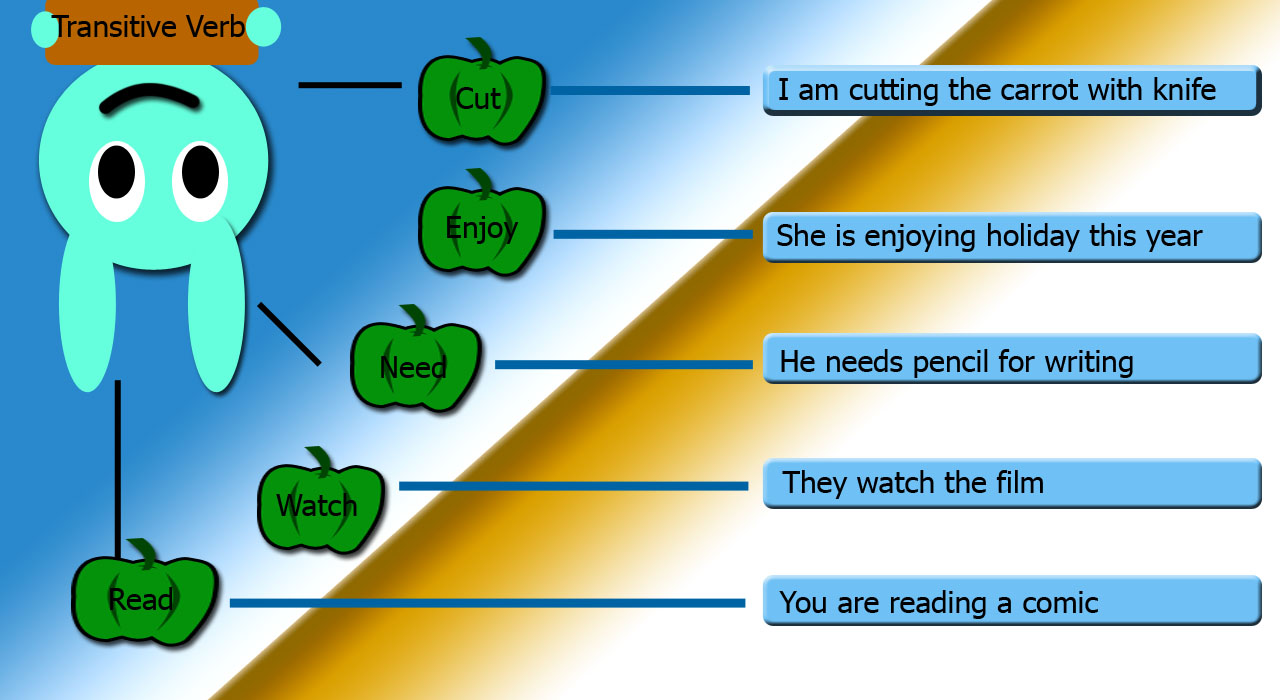

Transitive and Intransitive verb: Exercise.Difference between transitive and intransitive verbs.Transitive and Intransitive verb: Examples.



Other action verbs, however, can be transitive or intransitive, depending on what follows in the sentence. Some verbs, such as arrive, go, lie, sneeze, sit, and die, are always intransitive it is impossible for a direct object to follow. However, there may be other information after the verb, such as one or more prepositional phrases or an adverb.Ĭorrect: The students arrived at the residency in Houston.Īn action verb with a direct object is transitive while an action verb with no direct object is intransitive. Using an object immediately after an intransitive verb will create an incorrect sentence. You can find the indirect object by asking the question “To whom?” or “For whom?”Īn intransitive verb does not take an object. You can figure out the direct object by using this question format: “The subject did what?” or “The subject what?” In English, an indirect object may come between a transitive verb and the direct object, like the first example sentence about Donovan, or the indirect object could be in the form of a prepositional phrase, like the second example sentence about Donovan.Īn indirect object is only needed if the action is being done to or for somebody when using a transitive verb, you need to include a direct object, but you may not need to include an indirect object. However, there is another way to say this same idea using a prepositional phrase. In this sentence, there is an indirect object, his sister, and a direct object, a laptop. Direct and Indirect ObjectsĪ transitive verb can take more than one object. It is necessary to state what the speaker discussed. The verb discuss requires an object ( different marketing strategies). Incorrect: The speaker discussed in the video. Transitive verbĪ transitive verb is a verb that requires an object to receive the action.Ĭorrect: The speaker discussed different marketing strategies in the video. What are transitive and intransitive verbs? While the concepts might sound difficult, they are easier to understand when you think about the verb and whether there is an object receiving the action of the verb.


 0 kommentar(er)
0 kommentar(er)
